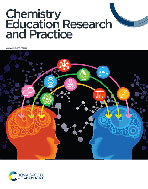Relevance and equity: should stoichiometry be the foundation of introductory chemistry courses?†
Abstract
Emphasizing stoichiometry appears to be a norm of introductory chemistry courses. In this longitudinal and mixed-methods study, we examined how the emphasis on stoichiometry in assessments of introductory chemistry impacted educational equity and student learning. Using quantitative methods, we identified mole and stoichiometric conversions as two of the most frequently assessed and inequitable competencies, perpetuating systemic inequities in access to pre-college mathematics preparation. Above all other competencies, midterm assessments of stoichiometry were the most impactful as the strongest predictor of students’ scores on both the first and second-semester introductory chemistry final exam. These results informed the development of a think-aloud protocol used to describe how students approached assessments of stoichiometry. Students described stoichiometry as a step-by-step series of calculations, rarely associating this algorithm with the process of a chemical reaction by which reactants break bonds and rearrange to form products. Student responses suggest stoichiometry substitutes learning how to apply chemistry to think about the problems scientists solve for memorizing algorithms to solve math problems in the context of chemistry. Shifting the foundation of introductory chemistry courses from algorithmic to applied competencies reflects scientific practice and maybe one strategy for educators to disrupt systemic barriers to access and retention in STEM Education. Based on these findings and the advancements of other research, we offer implications for supporting educators as they iteratively develop increasingly relevant and equitable assessments of introductory chemistry.


 Please wait while we load your content...
Please wait while we load your content...